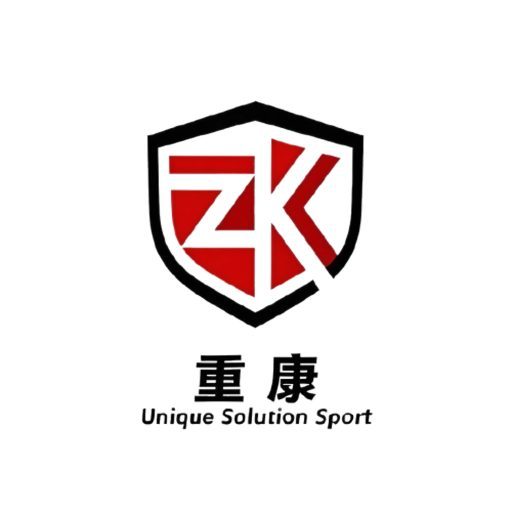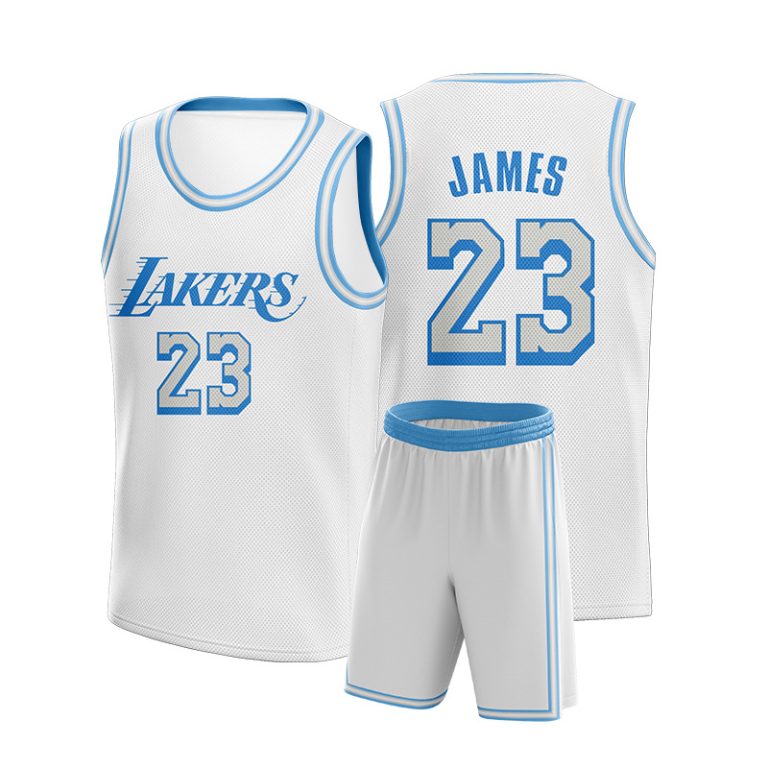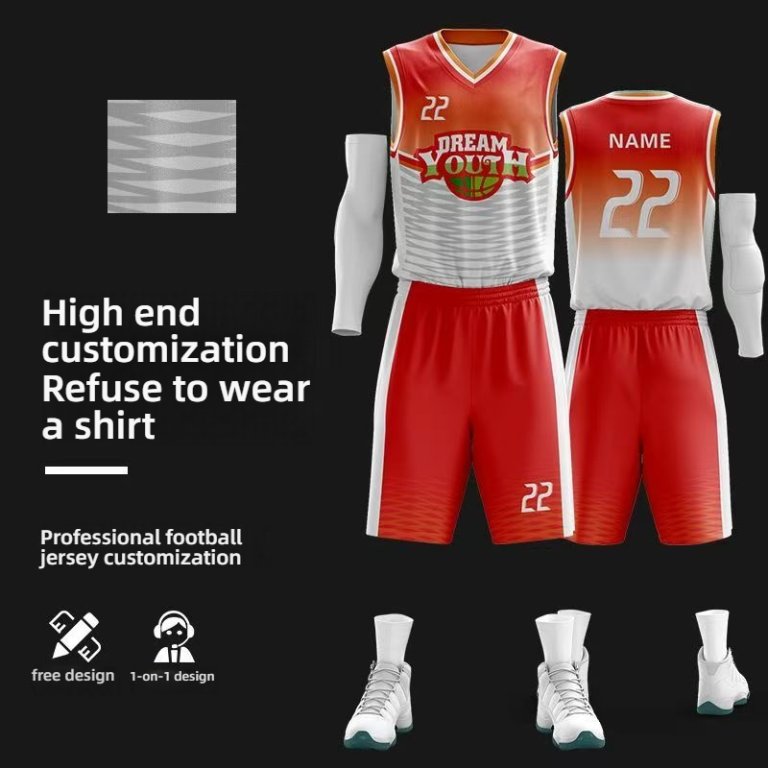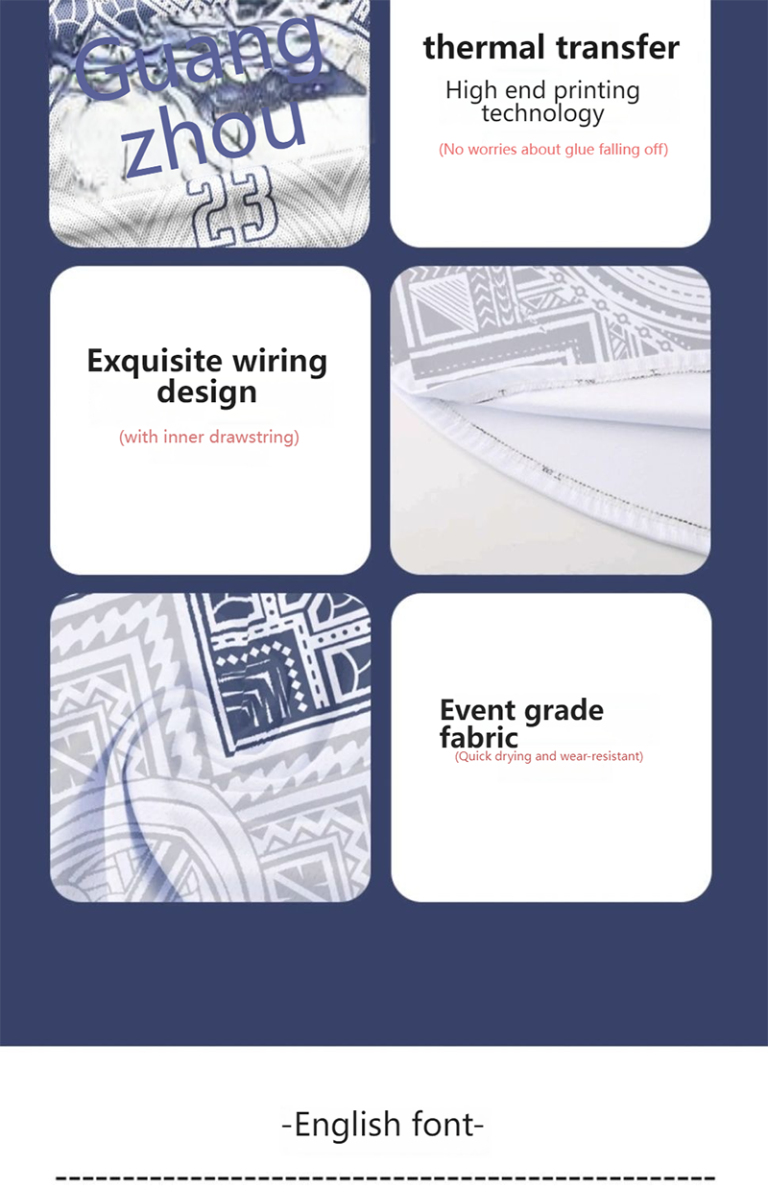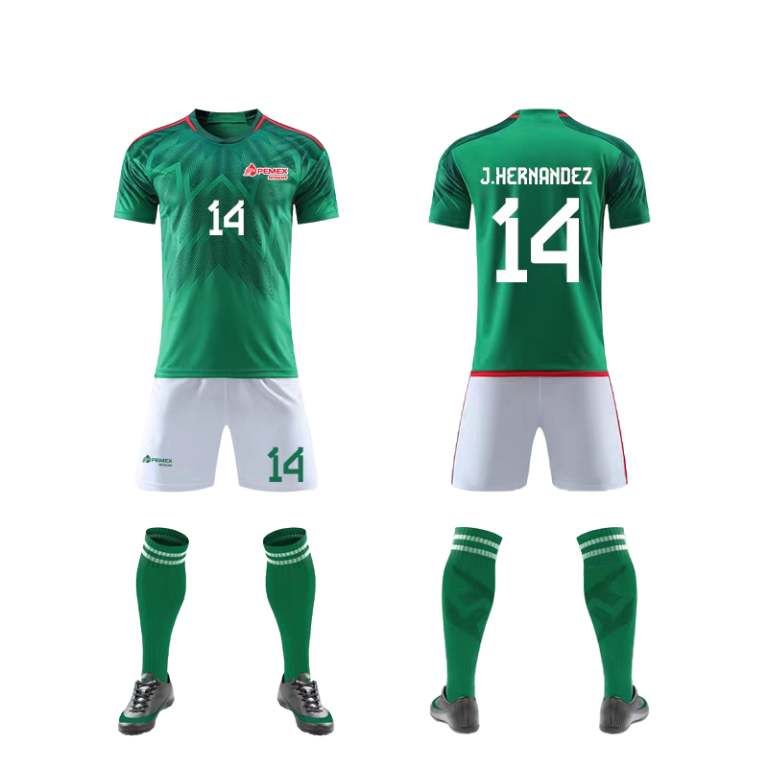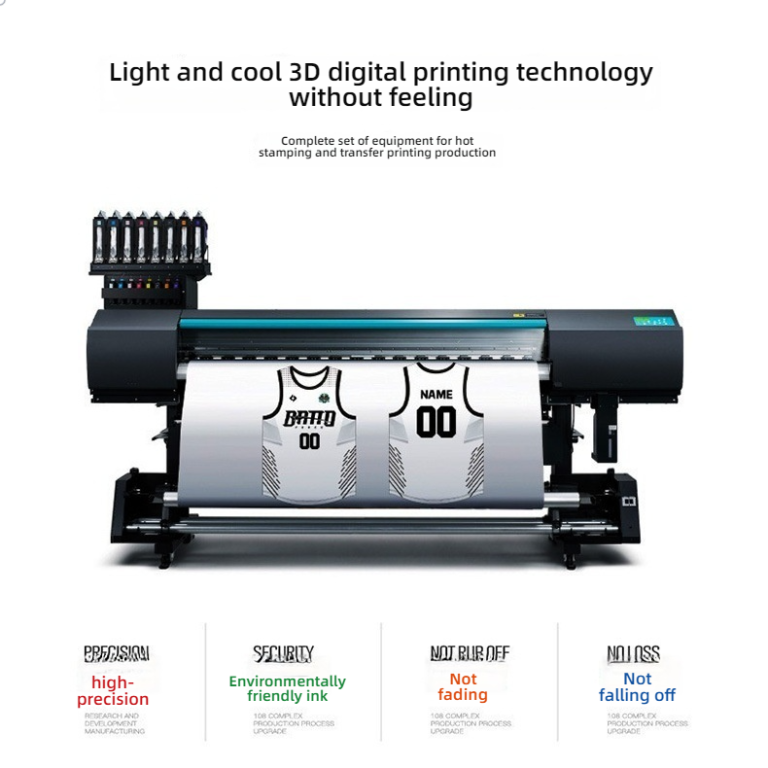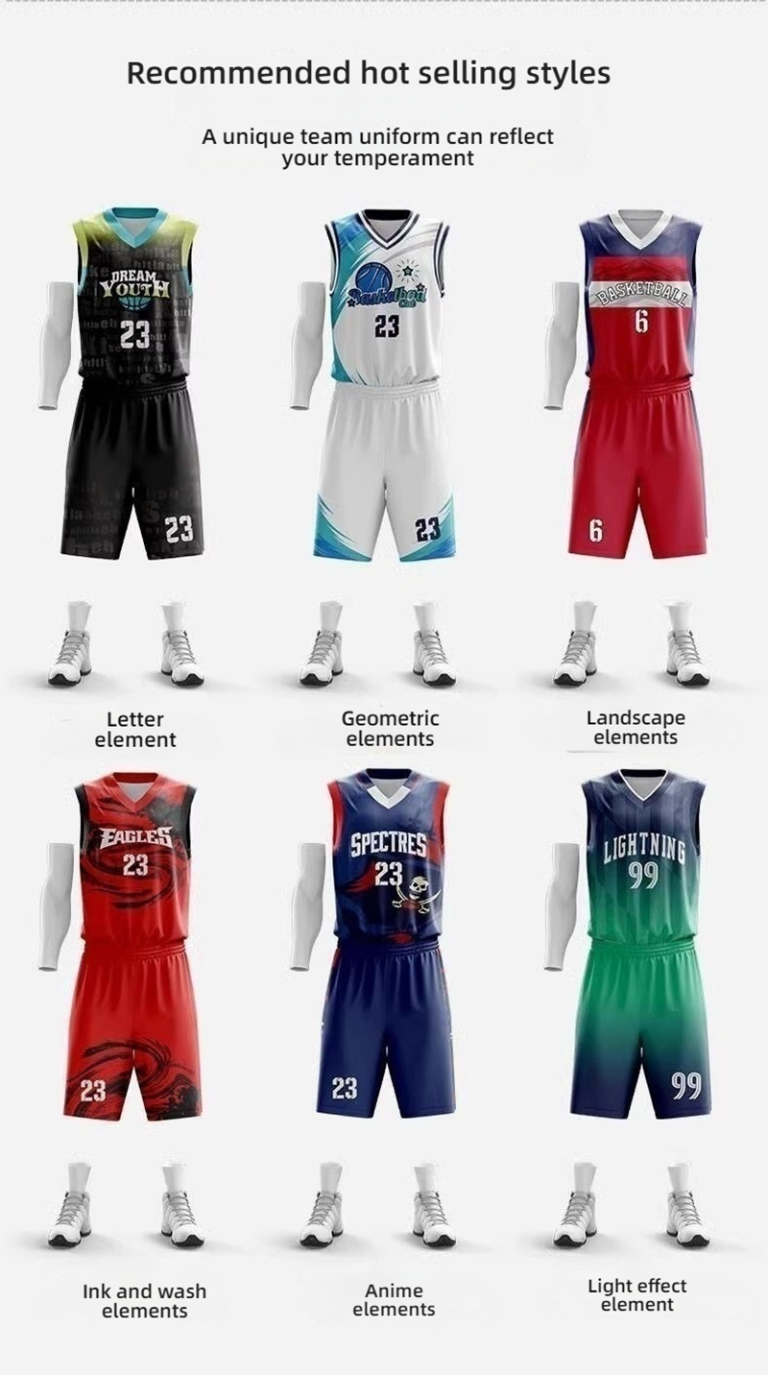Evolution of Sports Jerseys: Fabric, Design, and Sustainability in Uniforms
In sports activities, jerseys aren’t only a provider for athletes to exhibit their private fashion, however also a direct mirrored image of the group’s culture and logo image. With the rise of sporty fashion, the layout and manufacturing of jerseys have undergone a metamorphosis from simplicity to diversity. this text will explore numerous aspects together with the manufacturing method, material selection, image design, manufacturing go with the flow, marketplace developments, and environmental principles behind this made from sports activities culture, in order to show the tale in the back of this object.
-
material selection and treatmentthe manufacturing of sports activities jerseys starts with the choice of fabric. expert sports activities jerseys generally use high-performance substances along with polyester, nylon, or unique mixed materials. these fabrics offer light-weight, breathable, durable, and quick-dry houses. within the cloth treatment section, pre-shrinking is finished to decrease shrinkage problems after washing, making sure the consistency of jersey sizes.
-
reducing and assemblyAfter remedy, the fabric is cut into unique shapes and sizes to house the carrying requirements of different frame elements. The reduce fabric is then assembled, which requires excessive precision to make certain the jersey’s in shape conforms to human ergonomics and offers excellent comfort at some point of motion. Precision sewing strategies are used throughout assembly to make sure the electricity and aesthetics of the seams.
-
pattern Printing and EmbroideryThe patterns and crew logos on the jerseys are generally completed via printing or embroidery techniques. Printing techniques consist of screen printing and heat transfer, appropriate for big-vicinity pattern printing. Embroidery is used for complex patterns and information, maintaining the 3-dimensional experience and sturdiness of the sample. The printing and embroidery approaches are strictly managed for coloration and positioning to make certain the visual impact of the jersey.
four. purposeful designThe design of jerseys not best considers aesthetics however also focuses on functionality. as an example, the neckline layout may be a low collar or a turnover collar to meet the wishes of various sports. The cuffs and hem may be designed with elasticity for better movement freedom. moreover, some jerseys consist of reflective strips, breathable holes, and other designs to decorate protection and comfort all through exercising.
-
stitching and meetingAfter reducing, printing, and embroidery, the sewing technique of the jersey begins. expert stitching machines and threads are used in the course of stitching to make certain the energy and aesthetics of the seams. The various elements of the jersey are exactly stitched collectively, inclusive of linings, labels, zippers, and other accessories. a couple of exams are performed during assembly to make certain there are not any defects.
-
fine Inspection and PackagingAfter assembly, jerseys go through rigorous great inspections. This includes length measurements, seam energy tests, and sample printing high-quality tests. only jerseys that skip all inspections can proceed to the packaging section. in the course of packaging, jerseys are located in specialised defensive baggage and observed through product information labels.
-
Environmental safety and Sustainabilitymore and more producers are focusing on environmental safety and sustainability in the manufacturing of jerseys. This consists of the usage of recyclable substances, lowering the use of chemicals, and optimizing manufacturing techniques to lower power consumption. the manufacturing of jerseys not best meets the values of present day consumers however also demonstrates a commitment to the Earth.
Fabric Selection and Performance
the selection of material for sports jerseys directly influences their overall performance and sporting revel in. below is a detailed description of the traits of different fabrics:
fabric Fiber: sports jerseys normally use artificial fibers such as polyester (nylon) and spandex (Lycra), in addition to natural fibers like cotton and linen. synthetic fibers offer features like sturdiness, smooth washing, and quick drying, at the same time as herbal fibers emphasize breathability and comfort.
Breathability: excessive-breathable fabrics permit athletes to live cool at some stage in physical pastime and decrease soreness from sweat. for example, fabric made with breathable mesh or yarns that have right breathability can successfully expel sweat and preserve the pores and skin dry.
elasticity: the pliability of sports jerseys normally comes from the addition of elastic fibers like spandex. Spandex gives notable elasticity and recuperation, adapting to the stretching and contraction of athletes at some point of movement, and presenting accurate support.
sturdiness: at some stage in physical interest, sports jerseys are liable to friction and put on. therefore, choosing a durable fabric is vital. artificial fibers like polyester have incredible sturdiness, that could expand the lifespan of the jersey.
Wicking: current sports activities jersey fabric often have moisture-wicking houses, which include unique coatings or fiber remedy technology. those fabrics can speedy soak up sweat and expel it via microscopic pores, keeping the clothing dry.
Insulation: For winter sports activities or competitions in environments, insulation is an essential attention for jersey fabrics. fabric with correct insulation properties, along with wool or unique thermal fibers, can efficaciously withstand cold.
Softness: The softness of the jersey fabric at once influences the comfort of carrying it. selecting tender fabric, such as cotton and silk, can lessen pores and skin infection and enhance consolation.
Anti-static: throughout exercising, apparel is vulnerable to generate static power, that may have an effect on the athlete’s experience. some especially treated fabrics have anti-static homes and might successfully reduce the generation of static strength.
Ultraviolet protection: For outside sports, the jersey cloth wishes to have positive ultraviolet protection to guard the athlete’s pores and skin from UV harm.
In precis, the selection of jersey cloth overall performance wishes to remember multiple factors consisting of breathability, elasticity, durability, moisture-wicking, insulation, softness, anti-static homes, and ultraviolet safety to ensure that athletes have the satisfactory feasible enjoy and safety throughout competitions.

Pattern Design and Personalized Customization
pattern layout performs a essential position in sports group jerseys, now not most effective reflecting the team tradition but additionally regarding the visual popularity of athletes. the subsequent is an in depth description of sample design and personalised customization:
pattern layout is the soul of the jersey, and designers want to deeply understand the history, nearby traits, and fan lifestyle of the team, transforming summary elements into concrete visible symbols. not unusual elements within the design encompass the group brand, brand, color coordination, and unique commemorative patterns.
The front of the jersey usually features the team’s brand at its core, with the layout focusing on the expansion and prominence of the brand to make certain it remains truely visible at some point of motion. The layout of the emblem is aware of symmetry and concord, keeping overall visual balance at the same time as reflecting the crew’s honor and heritage.
In terms of coloration coordination, designers select colorings primarily based on the group’s conventional colors, home colorations, and away colorations. The coloration scheme desires to consider the visible impact of the jersey throughout sports, making sure it is in sunlight and has exact reflectivity at night.
personalized customization has come to be a first-rate trend in current jersey layout. With technological improvements, the demand for custom designed jerseys from fans and athletes is developing. Customization options encompass:
-
Numbers and Names: The athlete’s quantity and name are the most fundamental information at the jersey. in the course of customization, cautious consideration is given to the font, size, color, and location to match the participant’s character and the group’s style.
-
special styles: To commemorate unique activities or man or woman achievements, special styles can be added to the jersey. these styles can be abstract images or unique pictures, including the group’s iconic constructing or a landmark in shape scene.
three. personalized elements: some jerseys permit for the addition of personalized elements, such as the player’s fatherland landmark, favourite animal, or plant. these factors frequently reflect the player’s personal preferences and feelings.
- ** materials**: With the rise of environmental cognizance, some jerseys are actually made from recyclable or biodegradable substances, and the design contains environmental concepts, inclusive of using inexperienced plant styles or the Earth symbol.
at some stage in the pattern layout system, designers additionally recollect the capability of the jersey. for instance, to enhance breathability and moisture-wicking properties, designers might also cleverly depart air flow holes inside the sample whilst making sure the integrity of the design.
pattern layout and personalised customization are important additives of jersey design. They now not most effective reflect the crew’s traits and the player’s character but additionally embody the fusion of favor and era in modern sports clothing.

Production Process and Quality Control
The cutting of material should be specific to make certain the accuracy of the pattern and the overall length of the jersey. the usage of laptop-aided cutting structures achieves excessive precision and performance, lowering waste.
sewing craftsmanship is the soul of jersey production. every seam, from the neckline to the sleeve cuffs and hem, have to be neat and robust. professional sewing machines and thread device are used to make sure, whilst additionally listening to the flatness of the appearance.
common styles of jersey printing are heat transfer and direct inkjet printing. warmness switch is suitable for complex patterns and vivid hues, even as direct inkjet printing is extra suitable for unmarried-color or gradient patterns, each with its very own advantages, and the choice is primarily based on design requirements.
The of jerseys is an vital aspect of making sure comfort. whilst sewing, factors including the elasticity, weight, and breathability of the fabric need to be considered. professional workers ought to appropriately match the elements in line with the layout patterns, making sure there are no wrinkles and the sewing is clean.
To decorate the durability and washability of jerseys, reinforcement is typically applied to the stitching regions. the usage of unique thread, together with double-energy or reinforcing thread, can face up to extra anxiety and expand the lifespan of the jersey.
every system in jersey production ought to go through strict nice inspection, which include material testing, print quality exams, and stitching power assessments, to ensure that each jersey meets industry standards.
earlier than the finished jerseys are shipped, an overall appearance check is carried out, along with consistency in coloration, pattern, and size. merchandise that don’t meet the standards are lower back for reprocessing to ensure that the very last product delivered to consumers is of high exceptional.
Jersey packaging is likewise a part of the nice manipulate process. every product have to be prepared with specified product information labels, and the packaging luggage should be sealed properly to save you soiling. additionally, primarily based on purchaser requirements, additional packaging offerings such as gift packing containers and dirt covers may be supplied.
thru batch checking out and consumer feedback, the production procedure and first-class manipulate machine are continuously optimized to make certain the competitiveness of jerseys inside the marketplace.
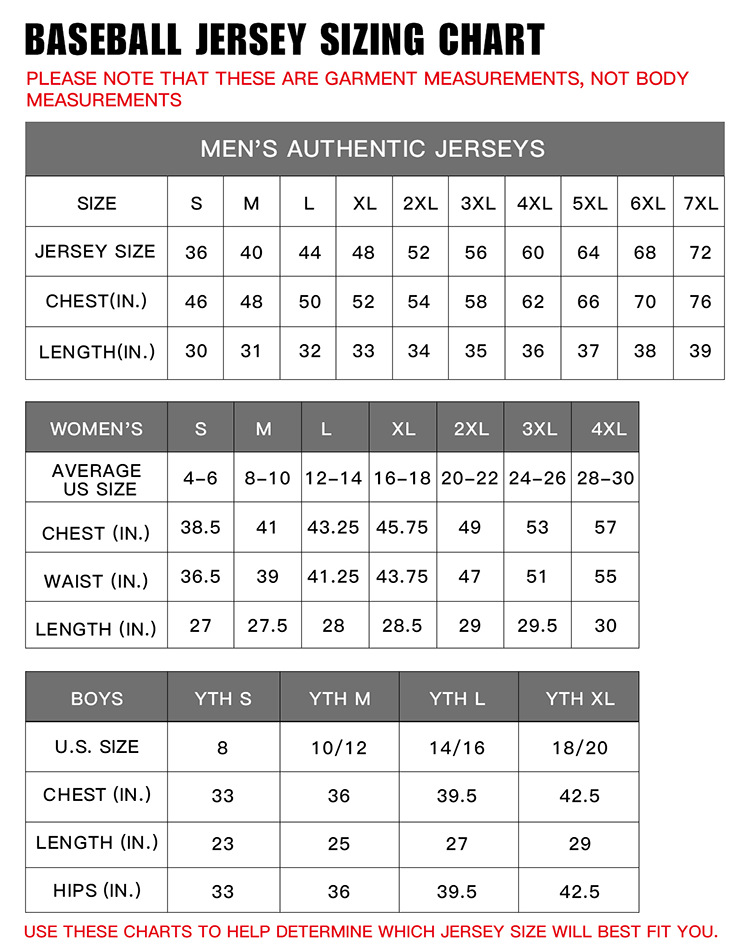
Market trends and consumer demand
the selection of fabric for sports activities uniforms is critical for his or her performance, and the subsequent is a detailed description of material choice and performance:
The cloth utilized in sports uniforms should have right breathability to make certain that athletes remain dry and secure at some point of physical activity. normally used breathable fabric include polyester and nylon, that could efficiently wick away sweat and maintain ventilation on the pores and skin surface.
wear resistance is an critical feature of sports activities uniform cloth. in the method of repeated carrying and workout, the cloth ought to hold its original power and appearance. high-performance polyester and spandex blends, which integrate the blessings of durability and elasticity, are best alternatives for making sports uniforms.
sports uniform fabric wishes to have a positive diploma of elasticity and stretchability to accommodate various moves of athletes. Spandex fibers, with their brilliant elasticity, are widely utilized in sports activities uniform fabrics, supplying desirable stretch and restoration.
shade and luster are also factors to don’t forget in sports uniform fabric. brilliant colors and luster now not handiest beautify the classy attraction of the uniform but also boom the visibility of athletes on the field. Dye fixation technology guarantees that the colours of the uniform are long lasting and do not fade.
The tactile sensation is the direct feeling of the cloth in touch with the pores and skin. fabric sense smooth, lessen friction, and limit soreness all through exercise. by using adding softeners and anti-static remedies, the cloth’s skin-friendliness is improved.
Environmental performance is also an crucial indicator for present day sports uniform fabrics. using biodegradable substances or recycled raw substances reduces the impact at the environment and complies with the idea of sustainable improvement.
The design of sports activities uniform cloth also varies with specific climatic situations. as an example, sports uniforms in high-altitude regions may require fabric with higher thermal insulation, while those in warm climates want to cognizance on breathability and warmth dissipation.
With the improvement of generation, sports uniform fabric are also constantly innovating. The emergence of clever fabric, along with temperature-regulating fabrics and people with antibacterial and scent-resistant residences, gives greater possibilities for the comfort and capability of sports activities uniforms.
customers’ needs for sports uniforms are increasingly more numerous, starting from conventional useful wishes to personalised and fashionable pastimes. consequently, the selection of fabric have to now not simplest meet simple purposeful necessities but additionally do not forget style factors and brand traits to draw customers.
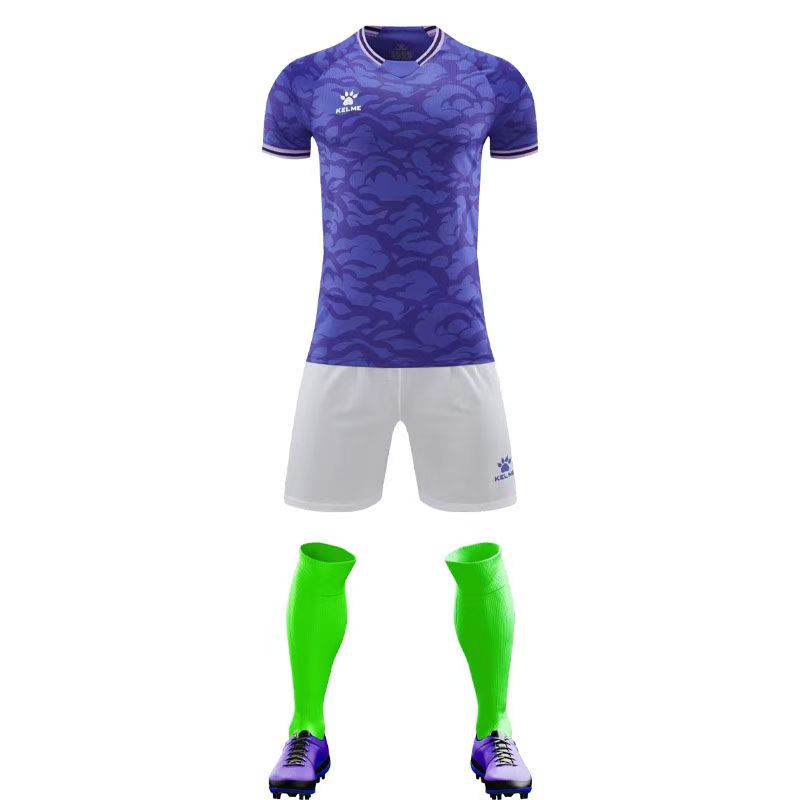
Environmental Protection Concept and Sustainable Development
in the choice of fabrics, factories prioritize consolation, durability, and capability. Cotton fabric are typically used for summer jerseys due to their right moisture absorption and breathability; at the same time as polyester fibers, acknowledged for his or her abrasion resistance and wrinkle resistance, are appropriate for iciness or high-depth sports activities activities. The addition of synthetic fibers like Lycra can enhance the pliancy and stretchability of the jerseys, growing the ability of wear.
In terms of overall performance, the material used for jerseys typically possesses the subsequent traits:- Breathability: unique weaving techniques allow the cloth to quick expel sweat, preserving the pores and skin dry.- quick-drying: unique finishing methods enable the fabric to hastily evaporate moisture from the floor, reducing the feeling of dampness.- Antimicrobial houses: Antibacterial retailers which include silver ions are introduced to the cloth to correctly inhibit bacterial boom, preserving the hygiene of the jersey.- solar safety: Sunscreen dealers are introduced to the cloth to reduce the harm to the skin from ultraviolet rays.
In phrases of picture design, factories adhere to the subsequent principles:- Simplicity and Aesthetics: The layout of the patterns is geared toward simplicity and beauty, easy to apprehend, and in step with the overall fashion of the jersey.- colour Coordination: colorations are chosen based totally on the group’s fundamental colors and emblem image to beautify the visual impact of the jersey.- Customization: offer personalized printing services for team logos, participant names, and numbers to meet purchasers’ pursuit of uniqueness.
In terms of the manufacturing manner, making jerseys includes numerous steps:- fabric training: Pre-cut back the cloth to make sure the finished product has strong dimensions.- pattern slicing: cut styles according to the jersey style and size requirements.- sewing strategies: Use laptop-managed stitching machines to make sure even and tidy sewing.- pattern Printing: Use advanced printing techniques including warmth switch and screen printing to accurately print patterns at the jerseys.- submit-processing: look into the color, length, satisfactory, and other aspects of the finished product to make sure they meet requirements.
excellent control is a vital a part of the manufacturing procedure:- uncooked fabric Inspection: Strict great testing of incoming uncooked materials to make sure that the cloth and accessories meet standards.- on-line Inspection: real-time tracking of key strategies in the course of production, which includes stitching and printing, to promptly discover and accurate troubles.- very last Inspection: behavior complete assessments on the finished product, including length, color, pattern, and sewing, to make certain every jersey meets standards.
With the increasing focus of environmental safety, jersey factories are also exploring sustainable development paths:- inexperienced manufacturing: Use environmentally pleasant substances and production procedures to lessen environmental effect.- electricity Conservation and Emission reduction: enhance electricity performance all through production to reduce carbon emissions.- Waste Recycling: Categorize and recycle waste generated for the duration of manufacturing to attain resource reuse.- existence Cycle assessment: investigate the environmental impact of merchandise from uncooked material procurement to product recycling, optimizing the manufacturing method.
